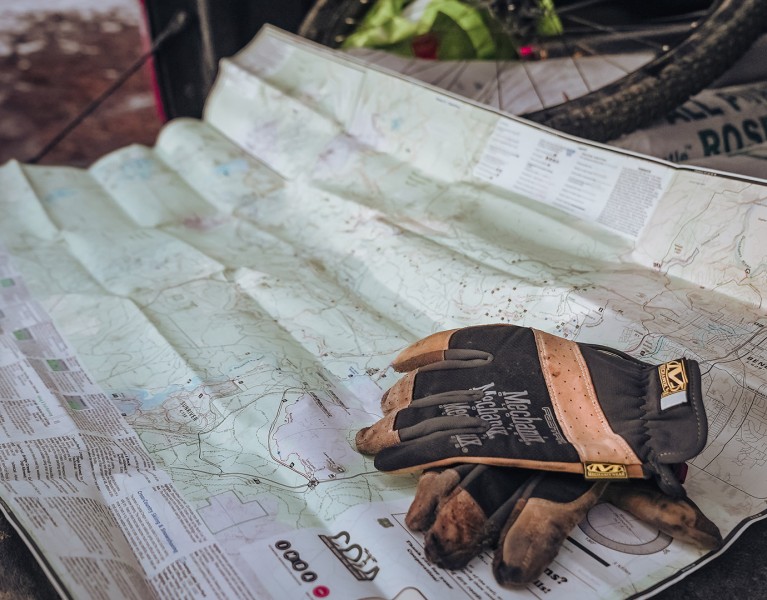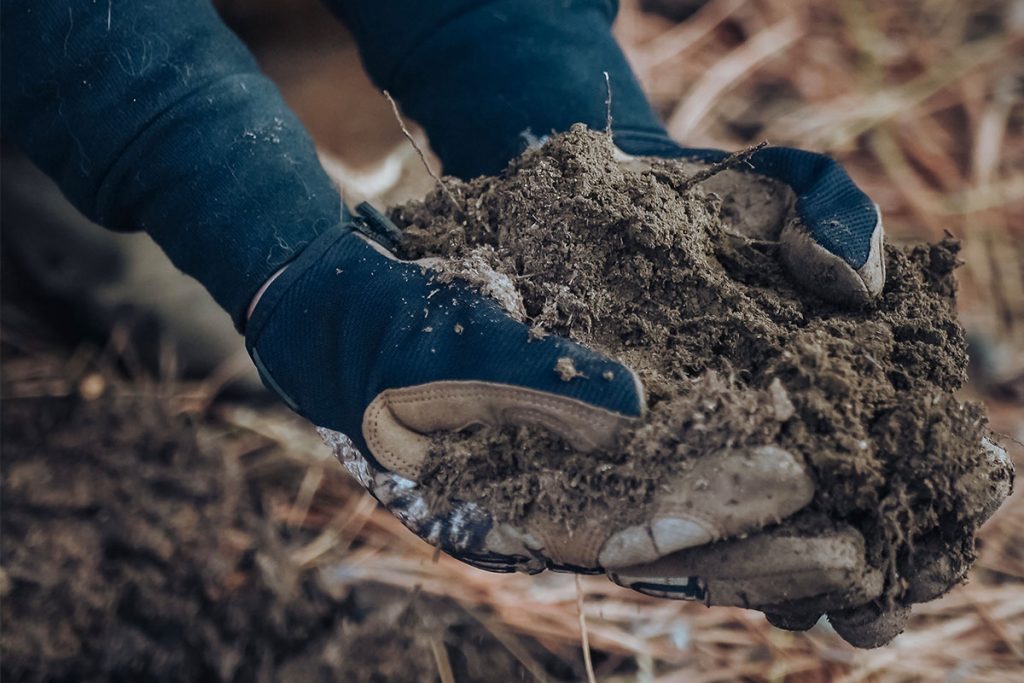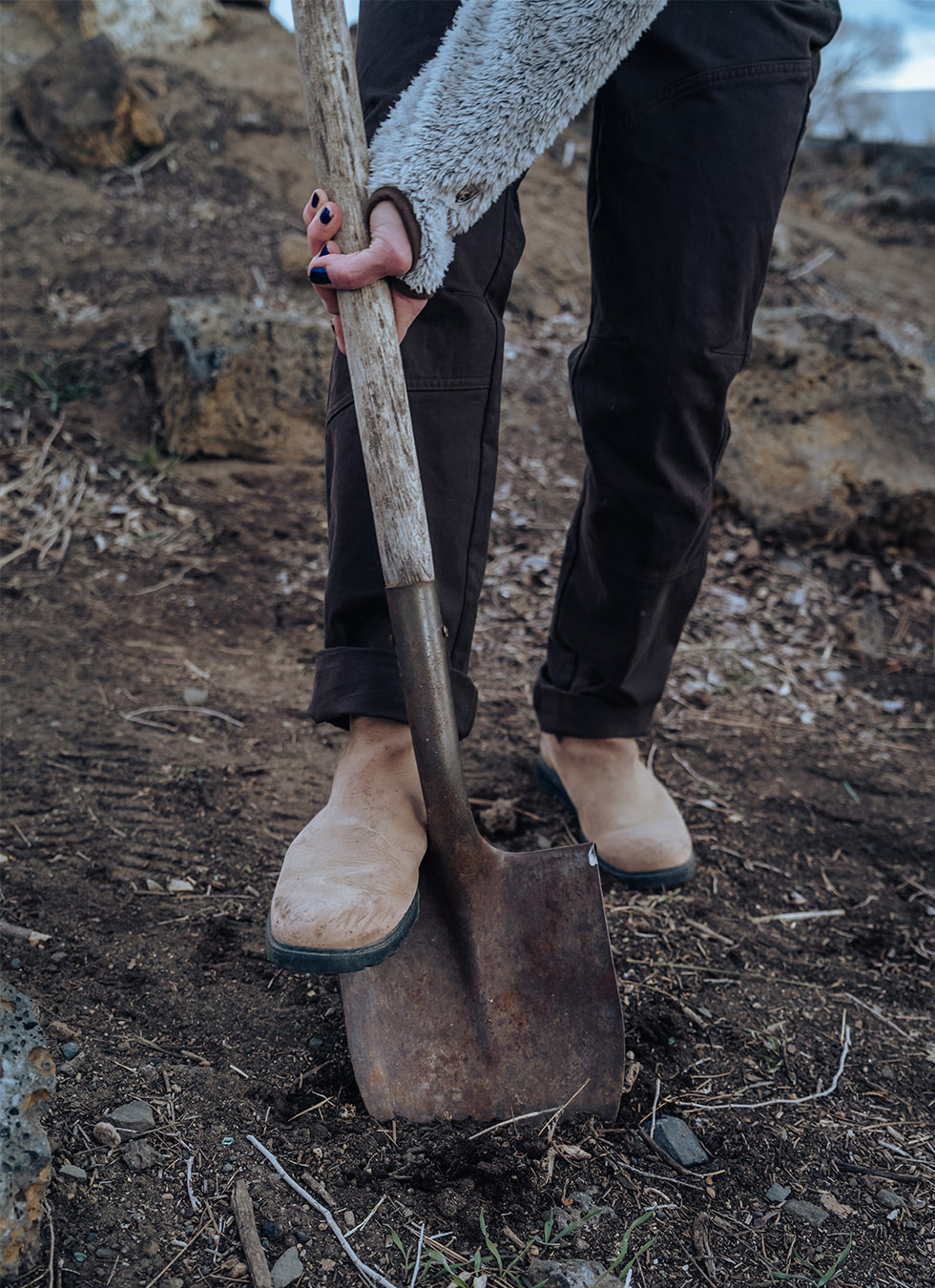
The Art of The Build
Table of Contents [Show]
An inside peek at the lifecycle of trail building featuring Emmy Andrews, Executive Director of Central Oregon Trail Alliance.
All photos by Javan Ward, 29NRTH.com
The Vision
The spirit of mountain biking weaves around trees in dense forests and it’s alive where rubber kisses the dirt. This spirit is the independence we feel as we let go of our waking thoughts and connect with the land around us. Mountain biking knits fabrics of communities all over the world by riding with friends and building trails within the community. By focusing on the origin of the trails, we take notice that this spirit is manifested through the grit, dedication and vision of developing new trails throughout our mountain bike-hungry communities. But who are the grit masters that move the earth’s dirt to create the winding trails of single-track? What teams of people come together to imagine trails in their new form? What behind-the-scenes operations do we often overlook as we lose ourselves in the experience of biking trails? It all starts with a vision and then the planning begins.

Planning
Trail building is an art, as is the planning process. Did you know that the planning process can often take 3-5 years before any shovels hit the dirt? The preliminary research, planning, and conceptualization can make up 50% or more of the whole timeline it takes to build a trail. The groundwork must be set and spearheaded by an organization or individual committed to the process. I sat down with Emmy Andrews, Executive Director of Central Oregon Trail Alliance (COTA) to discuss the details.
DC: What aspects are considered in the planning process?
EA: Mapping out our timeline, identifying our stakeholders, creating budgets and fundraising make up the meat of the planning process. These are some questions we ask ourselves:
Timeline
“What are the general phases of the build and within each phase? What are critical benchmarks achievements and dates that must be met? Many trails are located in National Forests, and when working with federal agencies, the anticipated timeline is often lengthy and bureaucratic. But working with lower levels of government and private landowners can take less time. Are there any specialized groups that will need to invite to survey the land? Will we have to consider a public comment period?”
Stakeholders
“Who are the contributing decision-makers and who will contribute to the execution of the project at large? Decision-makers primarily include Federal Land Managers, State/County Land Managers, and private landowners. Beyond the land managers, other stakeholders that are often a part of the planning process include representatives from the local trail building organizations, conservation alliances, land surveyors, timber companies, contractors, tourism agencies, and other trail-user communities who work together to make recommendations to envision and create a sustainable trail system.”
Budgets
“What is the anticipated cost of the complete project? Can we accurately forecast expenses? Do we need to submit RFPs (Request for Proposals) to local trail building contractors?”
Fundraising
“How long will it take to raise the money to complete the build out of the new trail? Who are the prospective donors? Do we need to apply for grants to financially support this project?” As Andrews answers these questions and develops the overall vision, it’s imperative that the project is built upon the sturdy ground by incorporating the Four Pillars of Sustainable Trail Building.
The Foundation
The Four Pillars of Sustainable Trail Building are the threads of balance and legitimacy that act as the critical foundation to assess the impact of building new trails in any given region. These pillars include Physical, Environmental, Managerial, and Social Sustainability. When trail organizations are aware of these pillars and apply this philosophical approach to building new trails, this practice tends to attract important stakeholders outside of the trail organization which is key to the seamless execution of the project. As the industry grows, so does the demand for new trails. What responsible questions must an organization ask relative to sustainability before building new trails? Here’s the breakdown:
Physical Sustainability
Physical sustainability is the pillar that relates directly to the dirt, flow, and land on which the trail is built upon. These preliminary questions will help an organization understand the “earth-factors” of building and maintaining the trail.
- What is the physical makeup of the land where the new trail is intended to be built?
- How well does the trail shed water?
- Does the terrain tend to erode?
- What is the maintenance load season to season, year to year?
Environmental Sustainability
As trail use increases, so does the human impact on wildlife and the native ecosystem. Depending on the land manager and the location of the trail (ie. National Forest, BLM, private land, etc.) official environmental impact assessments may need to be conducted prior to advancing the build-out schedule. For example, the National Environmental Policy Act (NEPA) ensures agencies consider the significant environmental consequences of their proposed actions and inform the public about their decision-making.
- What is the prospective trail’s impact on the native wildlife?
- What is the prospective trail’s positive and negative impact on the environment?
- How will building a trail impact the existing landscape?
- Are there sensitive cultural artifacts in the area?
- What environmental regulations need to be considered prior to conceptualize this trail?
Many avid riders can agree that mountain biking is a great way to explore our public lands and the environmental impact of riding bikes is highly considered before building any new trails. Did you know that while mountain biking is appropriate in many of our National Forests, biking is not allowed in protected Wilderness areas? Due to the sensitive nature and wildlife habitat, Wilderness areas do not permit motorized or mechanized activities, and mountain biking fits into the mechanized category due to the use of gears. Know before you go!
Managerial Sustainability
Managerial sustainability focuses on the human-powered oversight and operations of maintaining a trail. Once a trail is built, organizations and responsible groups of people are responsible for the upkeep and management involved in keeping the trail “ready to ride” for its users. Responsible parties may include Federal Land Managers, trail alliance organizations and local volunteer groups.
- What organization is responsible for implementing clear signage?
- Who will empty the waste bins or clean the restrooms at the trailhead?
- Who will manage the maintenance of the trail such as cutting fallen trees and reshaping berms?
- What organization implements any future trail improvements?
Social Sustainability
The pillar of social sustainability largely relates to meeting the needs of the intended trail users and building trails focused on this very goal. When users digress away from the original trail, they unintentionally widen it by their foot traffic atop the natural vegetation. Riding off-trail creates additional micro trails which causes environmental damage and raises maintenance costs. To gain a deep understanding of the desires of trail users, local trail alliance organizations may send out community-wide surveys or host in-person meetings. Furthermore, trail alliance organizations may partner with regional or state universities to conduct formal research studies to identify current trail usage data and specific trail user desires for future trails. This type of engagement with the public through outreach, questionnaires, and dialogue is paramount for any new project dedicated to social sustainability. Questions relative to social sustainability may include:
- Does the prospective trail design– ie. technical uphill, flowy downhill, open cross-country– meet the needs and desires of the intended trail users?
- Where do users want to ride– ie. what terrain is most desirable?
- Is the trailhead accessible?
- Will visiting trail users utilize this trail?
- Does this trail meet user expectations?
- Will the trail users follow the trail as it is built and enjoy the ride?

Funding New Trails
Fundraising is critical for the buildout of any new trail. A familiar strategy of many trail building organizations is to raise money early enough in the planning process so that when the trail work is approved by the land manager or property owner, the building process is ready to be executed immediately.
Emmy Andrews, Executive Director of COTA, dropped some insightful averages that many trail users may be unaware of—
- Did you know that the average distance for a mountain bike trail is about 10-20 miles?
- Did you know that each mile of trail work averages a cost about $50,000-$70,000?
- Did you know for every 10-20 miles of trails, it costs about $500,000-$1,500,000 of funding for the project to be executed?
For example, as of August 2021, COTA maintains over 500 miles of single-track trails in Central Oregon. If we applied the numbers stated above, the price tag of building 500 miles of single-track is between $25,000,000-$35,000,000. Wow! It takes a village to plan to build new trails, and it takes another village to fundraise the money to execute the plan. Here are some examples of how we “get the money:”
Grants
Grants come in many shapes and sizes and the grant money generally has specific parameters in which it can be utilized. For example, The Recreational Trails Program (RTP) is a federally funded grant program administered by the Oregon Parks and Recreation Department. Since 1993, Oregon has funded over 500 projects with RTP funds to develop, improve, or expand motorized and non-motorized trails and their facilities. In addition to federal and state grants, many national foundations and endemic industry organizations offer grants for trail stewardship and trail building programs. [insert generous Kuhl donation to COTA and Mountain Trails Foundation here ;) ]
Tourism Tax
Many state and county agencies, such as Travel Oregon’s Destination Ready Program, allocate tourism tax dollars to support advances and maintenance of local recreation such as existing trail maintenance and new trail building.
Memberships
Nonprofit organizations, such as Central Oregon Trail Alliance, rely on membership dollars to support the administration and operations of trail stewardship and trail building programs in the region.
Community Partners
Additionally, non-profit organizations are able to advance their missions within the community through corporate sponsorships, in-kind donations, and ongoing partnerships with aligned and supportive small to large businesses.
Private Donors
Although many private donors prefer that their in-kind donations are unpublicized, unexpected small to large financial donations to nonprofit trail stewardship organizations are deeply celebrated and revered.
We are always reminded, “It’s about the journey, not the destination.” Are you inspired to contribute to building new trails in your community? In what ways are you ready to make an impact? Getting involved with your local trail alliance organization takes a few quick swipes of your keys and a search on google. Building and maintaining trails is an impactful way to build a deeper relationship with the earth and the community around you.
We are always reminded, “It’s about the journey, not the destination.” Are you inspired to contribute to building new trails in your community? In what ways are you ready to make an impact? Getting involved with your local (or international) trail alliance organization takes a few quick swipes of your keys and a search on google. Building and maintaining trails is an impactful way to build a deeper relationship with the earth and the community around you.
Interested in making a change? Donate to COTA or sign up to become a member.
Danielle Caruso,
Board Member
Central Oregon Trail Alliance




